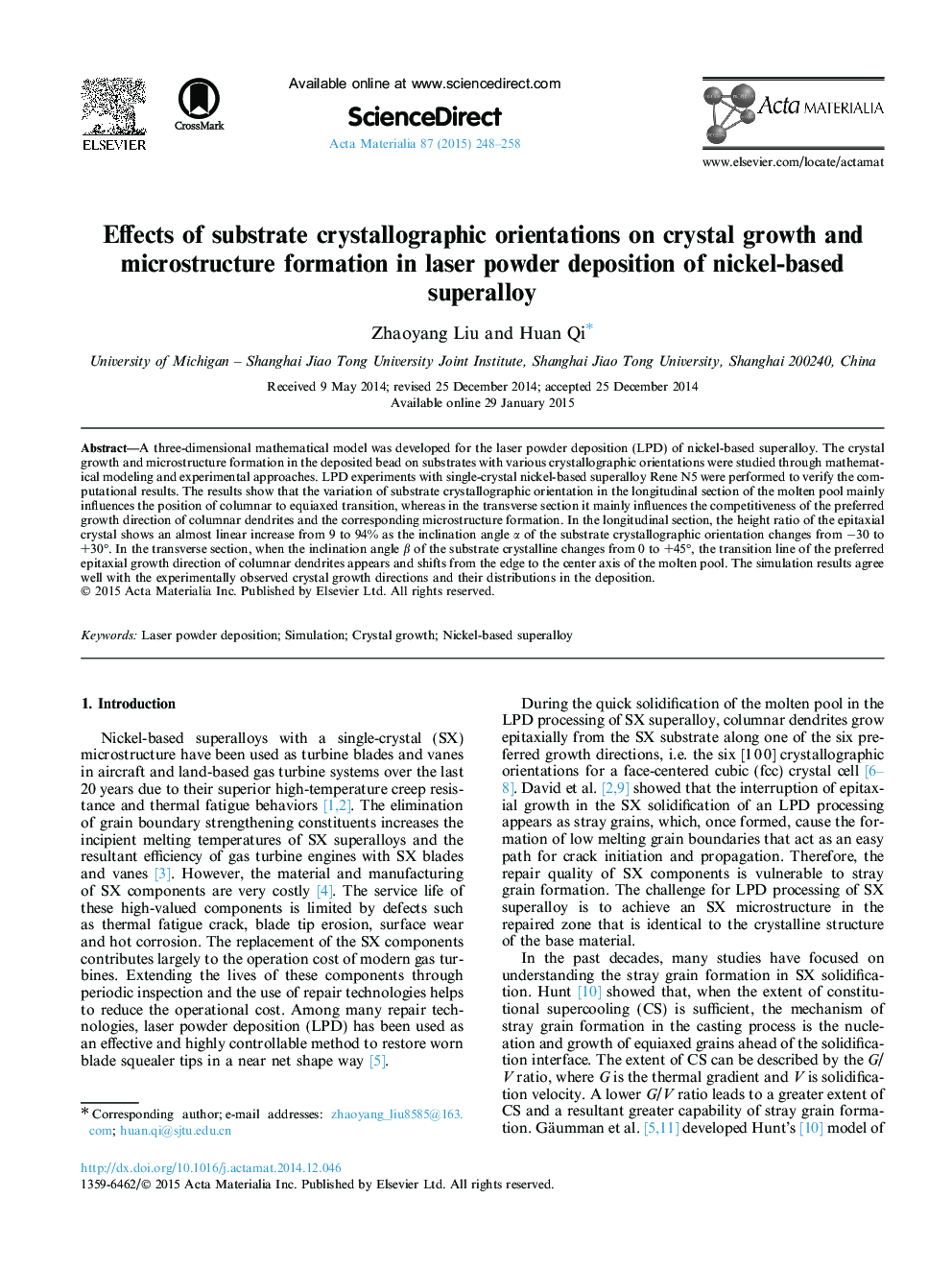| Article ID | Journal | Published Year | Pages | File Type |
|---|---|---|---|---|
| 7880644 | Acta Materialia | 2015 | 11 Pages |
Abstract
A three-dimensional mathematical model was developed for the laser powder deposition (LPD) of nickel-based superalloy. The crystal growth and microstructure formation in the deposited bead on substrates with various crystallographic orientations were studied through mathematical modeling and experimental approaches. LPD experiments with single-crystal nickel-based superalloy Rene N5 were performed to verify the computational results. The results show that the variation of substrate crystallographic orientation in the longitudinal section of the molten pool mainly influences the position of columnar to equiaxed transition, whereas in the transverse section it mainly influences the competitiveness of the preferred growth direction of columnar dendrites and the corresponding microstructure formation. In the longitudinal section, the height ratio of the epitaxial crystal shows an almost linear increase from 9 to 94% as the inclination angle α of the substrate crystallographic orientation changes from â30 to +30°. In the transverse section, when the inclination angle β of the substrate crystalline changes from 0 to +45°, the transition line of the preferred epitaxial growth direction of columnar dendrites appears and shifts from the edge to the center axis of the molten pool. The simulation results agree well with the experimentally observed crystal growth directions and their distributions in the deposition.
Related Topics
Physical Sciences and Engineering
Materials Science
Ceramics and Composites
Authors
Zhaoyang Liu, Huan Qi,
